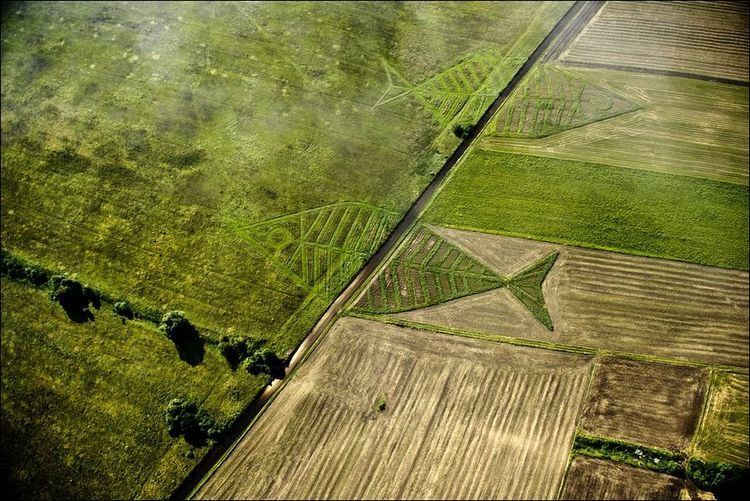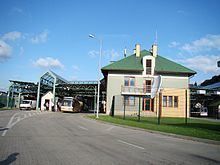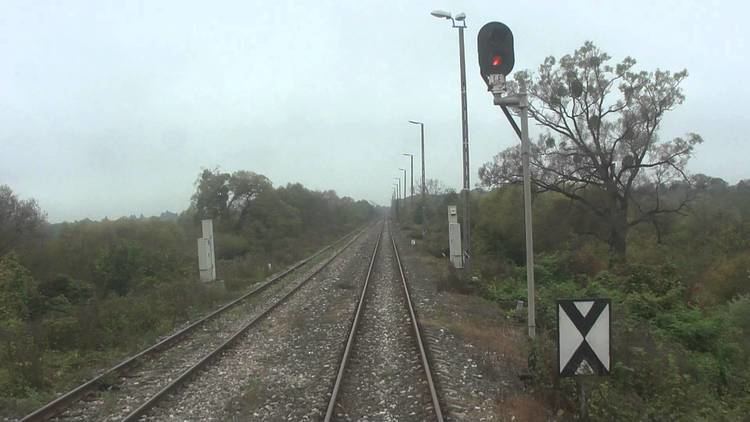 | ||
Poland–Ukraine border is the state border between Poland and Ukraine. It has a total length of 535 km (332 mi) or 529 km (329 mi) (sources vary).
Contents

History

A Poland-Ukraine border first formed, briefly, in the aftermath of the Polish-Ukrainian War in 1919. The Treaty of Warsaw of 1920 divided the disputed territories in Poland's favor along the Zbruch River. Next year, however, Ukraine lost its independence to the Soviet Union, and its remaining territories were split between Poland and the Ukrainian SSR in the Peace of Riga.

The dissolution of the Soviet Union into a number of post-Soviet states transformed the Poland-Soviet border into the chain of Poland-Russia, Poland-Lithuania, Poland-Belarus and Poland-Ukraine borders. Poland and Ukraine have confirmed the border on 18 May 1992. It is the longest of Polish eastern borders. The border became much more open compared to the Soviet times, when despite being part of the Eastern Bloc, crossing was very difficult. As the border was opened to mass traffic, the number of people crossing the Polish-Ukrainian border begun raising steadily since 1990, stabilizing around 2000s. Approximately 3 million Ukrainians crossed the border in the 1990s, annually. One of the peak numbers was recorded in 2001, with about 12 million people crossing the border.

With Poland joining European Union in 2004 the border has become one of the external borders of the European Union. It is one of four EU-Ukraine borders, the others being the Hungary-Ukraine border, Romania-Ukraine border and the Slovakia-Ukraine border. As it is an entry point to the Schengen Area, this introduced a visa requirement for Ukrainian citizens entering Poland as of October 2003. In the period October 2003-September 2004 Polish authorities issued about 620,000 visas to Ukrainians. The visa requirement has not reduced the traffic significantly, as it returned to the prior levels within a year. Another peak has occurred in 2006, when there were almost 20 million border crossings. In 2008 Poland and Ukraine adopted policies on local border traffic (put into effect in 2009). This agreement introduced local border traffic permits allowing holders to cross the border for up to 90 days per half-year. 2009 saw approximately 12 million border crossings on the Poland-Ukraine border.
Characteristics
The Poland-Ukraine border is the most often crossed eastern border of the EU.

Most of the border traffic is generated by Ukrainian citizens. Petty trade and shopping tourism were and still are driving much of the traffic, with migration for labor purposes being another significant factor.
The border is heavily policed, as it is a major smuggling route into EU, both for goods and for illegal immigration.
Approximately 8 million people live in the border area, roughly equally divided between Poland and Ukraine.
Border crossings
There are numerous border crossings between Poland and Ukraine, in a combination of road, rail, passenger and cargo crossings. As of 2012, the following were active:
- Medyka-Shehyni: road, cargo and passenger crossing;
- Dołhobyczów-Uhrynów: road, and passenger crossing;(opened in July 2014)
- Korczowa-Krakivets: road, cargo and passenger crossing;
- Hrebenne-Rava-Ruska: road, cargo and passenger crossing; and rail passenger crossing;
- Zosin-Ustyluh: road, passenger crossing;
- Krościenko-Smilnytsya: road; passenger crossing;
- Dorohusk-Yahodyn: both road and rail, cargo and passenger crossings;
- Hrubieszów-Volodymyr-Volynskyi: rail, cargo and passenger crossing;
- Krościenko-Khyriv: rail, passenger crossing;
- Przemyśl-Mostyska II: rail, passenger and cargo crossing;
- Werchrata-Rava-Ruska: rail, cargo crossing
